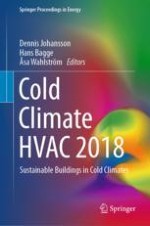2019 | OriginalPaper | Buchkapitel
Calibration of a High-Resolution Dynamic Model for Detailed Investigation of the Energy Flexibility of a Zero Emission Residential Building
verfasst von : John Clauß, Pierre Vogler-Finck, Laurent Georges
Erschienen in: Cold Climate HVAC 2018
Aktivieren Sie unsere intelligente Suche, um passende Fachinhalte oder Patente zu finden.
Wählen Sie Textabschnitte aus um mit Künstlicher Intelligenz passenden Patente zu finden. powered by
Markieren Sie Textabschnitte, um KI-gestützt weitere passende Inhalte zu finden. powered by
